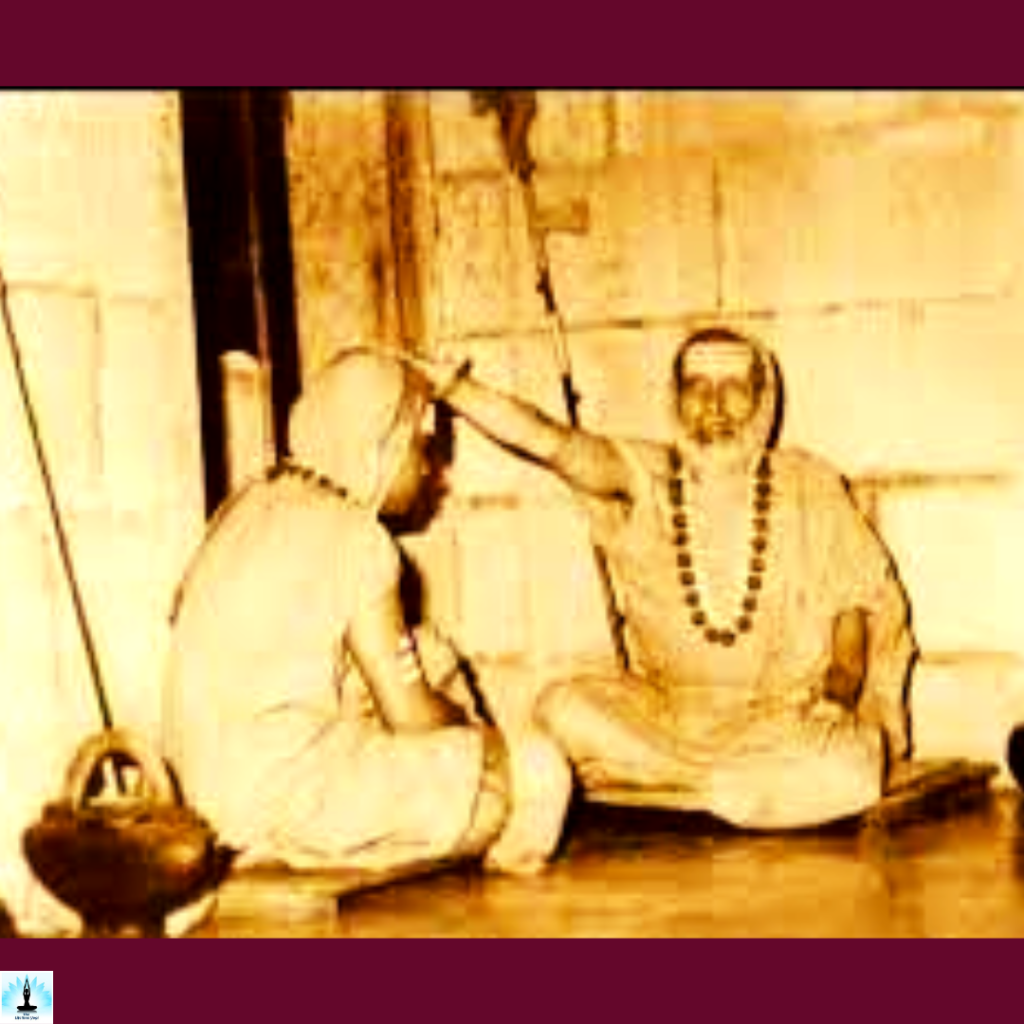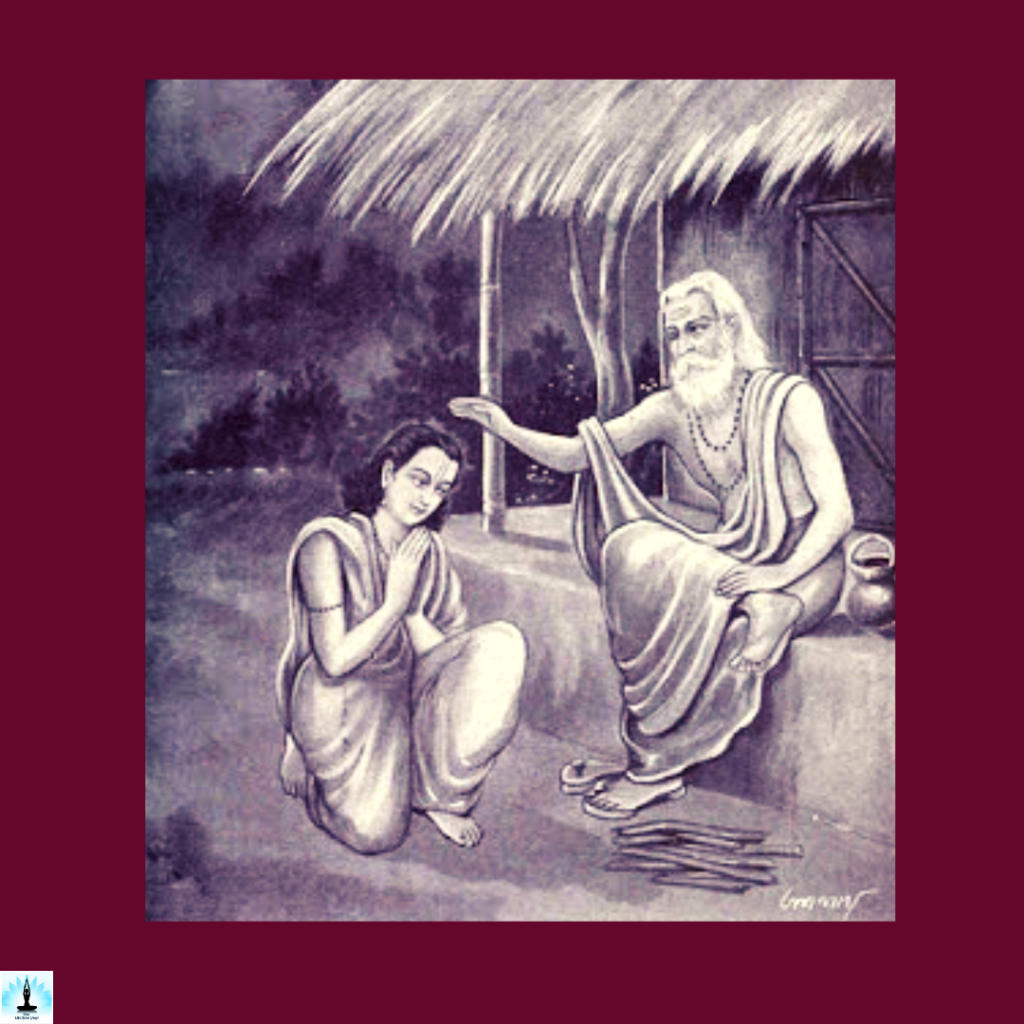What is Mantra Diksha – A Sacred Initiation into Spiritual World from Your Guru
In the realm of spiritual practices, Mantra Diksha stands as a sacred doorway, inviting seekers into the profound world of vibrational consciousness. The term “Diksha” itself translates to initiation or consecration, signifying the transmission of spiritual energy from the teacher (guru) to the disciple. When this initiation involves a mantra, it becomes Mantra Diksha — a ceremony where a spiritual guide imparts a specific mantra to the seeker.
Table of Contents
The Essence of Mantra
At the heart of Mantra Diksha lies the recognition of the power of sound. Mantras are sacred, syllabic formulas embedded with spiritual significance. These ancient sound vibrations are believed to carry transformative energies that can elevate consciousness and align the practitioner with the divine. Mantras may be words, phrases, or even a single syllable, each resonating with a unique vibrational frequency.
The Role of a Guru for Mantra Diksha

Central to the Mantra Diksha ceremony is the guru-disciple relationship. The guru, as a spiritual guide, holds the key to unlocking the potential within the disciple.
The guru imparts not just a set of syllables but the essence and energy associated with the chosen mantra. This transmission is more than a mere exchange of words; it is a profound sharing of spiritual wisdom and energy.
Significance of Mantra Diksha (Initiation)
Mantra Diksha is not a casual event but a sacred ritual with deep spiritual implications. The initiation serves as a catalyst, igniting a process of inner transformation within the seeker. The guru, through the chosen mantra, acts as a bridge connecting the disciple to a higher, transcendent reality. This initiation is a symbolic entry into the sacred lineage of spiritual practitioners who have walked the path before.
Choosing the Right Mantra for Mantra Diksha
Mantras vary across traditions and lineages, each holding unique vibrational qualities. The selection of a mantra in Mantra Diksha is a nuanced process, often guided by the guru’s intuitive understanding of the disciple’s spiritual needs.
Some mantras are associated with specific deities, while others resonate with universal energies. The right mantra serves as a personalized tool for the seeker’s spiritual growth.
The Transformative Journey after Mantra Diksha
Mantra Diksha marks the beginning of a transformative journey. Regular chanting or repetition of the initiated mantra becomes a meditative practice, allowing the practitioner to dive into the depths of their own consciousness.

The vibrational resonance of the mantra gradually purifies the mind, calms the fluctuations of thought, and opens the heart to higher states of awareness.
What are the Benefits of Mantra Diksha
The benefits of receiving Mantra Diksha are multifaceted.
- Beyond its calming effects on the mind, the practice is believed to purify the practitioner’s energy.
- Mantra Diksha awakens dormant spiritual potentials, and deepen their connection to the divine.
- Mantra chanting becomes a vehicle for self-discovery, leading the practitioner toward inner peace, heightened intuition, and expanded consciousness.
Respecting the Sacred Tradition in Mantra Diksha
Participating in Mantra Diksha involves a commitment to the sacred tradition of mantra chanting. The disciple acknowledges the sacredness of the imparted mantra and embraces the responsibility of integrating this practice into their daily life. This commitment fosters a harmonious relationship between the disciple, the guru, and the spiritual lineage.
FAQs on “Mantra Diksha”
What Is Mantra Diksha?
Mantra Diksha is a sacred initiation ceremony in which a spiritual teacher, known as a guru, imparts a specific mantra to a disciple. This ceremony is a profound and symbolic transmission of spiritual energy, aiming to elevate the consciousness of the seeker.
Can I Pick a Mantra Without Any Formal Mantra Diksha?
While one can learn about and even practice mantras without formal initiation, the depth and transformative power associated with Mantra Diksha involve receiving the mantra from a qualified guru. The guru’s guidance and energy transmission play a crucial role in the efficacy of the mantra.
Is The Guru Has Only Privilege for Giving Diksha?
Traditionally, the role of a guru is considered central in the process of Diksha. The guru is seen as a spiritual guide who, through their wisdom and energy, imparts the mantra to the disciple. The guru-disciple relationship is foundational in this sacred practice.
What Is the Diksha Mantra?
The Diksha mantra is the specific sacred syllabic formula given to the disciple during the initiation ceremony. This mantra is chosen by the guru based on the spiritual needs and disposition of the disciple.
What Are The 5 Types of Diksha?
Diksha is categorized into various types, including Shaktipat Diksha (transmission of spiritual energy), Beeja Mantra Diksha (initiation into seed mantras), and Guru Diksha (receiving a mantra from a guru). Each type serves different spiritual purposes.
What Is Diksha in Hinduism?
In Hinduism, Diksha is a consecration or initiation ceremony. It is a sacred ritual through which a person formally enters a specific spiritual path or tradition, receiving guidance and empowerment from a guru.
Where Can I Get Mantra Diksha?
Mantra Diksha is typically received from SadhGuru meaning a qualified guru who has expertise in the specific tradition or lineage associated with the chosen mantra. Seekers often find gurus through spiritual communities, ashrams, or direct referrals.
How Does Mantra Diksha Work?
Mantra Diksha works through the vibrational power of the mantra. The guru, as a spiritual conduit, transmits not only the syllables but also the spiritual energy associated with the mantra. Regular chanting of the mantra then becomes a transformative practice for the disciple.
What Is the Power of Mantra Diksha?
The power of Mantra Diksha lies in its ability to awaken dormant spiritual potentials, purify the mind, and deepen the practitioner’s connection to the divine. The mantra serves as a tool for inner transformation and heightened states of awareness.
Why Is Mantra Diksha Important?
Mantra Diksha is important as it marks the beginning of a profound spiritual journey. It establishes a sacred connection between the disciple, the guru, and the chosen mantra, fostering a transformative process of self-discovery.
What Are the Rules of Mantra Diksha?
The rules of Diksha vary across traditions, but common principles include maintaining the sanctity of the imparted mantra, following ethical guidelines, and embracing a commitment to regular practice.
What Happens After Mantra Diksha?
After Mantra Diksha, the disciple is expected to integrate the mantra into their daily life through regular chanting and meditation. The ongoing practice deepens the impact of the initiation, leading to spiritual growth.
Why Are Mantras Kept Secret?
Some mantras are kept secret to preserve their vibrational purity and sanctity. Revealing certain mantras without proper guidance may dilute their spiritual potency.
Does Mantra Really Work?
The effectiveness of mantra practice varies among individuals, but for many practitioners, regular and sincere mantra chanting has been a transformative and empowering spiritual tool.
How Do I Know My Mantra?
Discovering the right mantra often involves guidance from a guru who assesses the spiritual needs of the disciple. Intuition, resonance, and alignment with specific deities or energies are factors considered in the selection process.
Conclusion
Mantra Diksha is a profound initiation, weaving together the sacred threads of sound, spirituality, and the guru-disciple connection. As seekers embark on this transformative journey, they tread the path of self-discovery, guided by the resonance of a sacred mantra. In the echoing vibrations of these sacred syllables, the seeker finds a companion on the spiritual journey, facilitating a deeper communion with the infinite realms of consciousness.
References
- Yogananda, Paramhansa (2003). Autobiography of a Yogi. Sterling Publishers Pvt. Ltd. p. 102. ISBN 978-81-207-2524-9.
- Hallstrom, Lisa Lassell (1999). Mother of Bliss: Ānandamayī Mā (1896-1982). Oxford University Press US. pp. 140–144. ISBN 978-0-19-511647-2.
- Humes, Cynthia. “Maharishi Mahesh Yogi: Beyond the TM Technique”. In Gurus in America, ed. Cynthia Humes and Thomas Forsthoefel. Albany: State University of New York Press, 2005.
- Sadhu Mukundcharandas. Hindu Rites and Rituals. 4th edition. Amdavad: Swaminarayan Aksharpith, 2007. Page 237.
- https://rkmath.org/mantra-diksha/
- https://books.google.com/books?id=FReaDwAAQBAJ&printsec=frontcover
